In de koude valutaoorlog die sinds 2016 gaande is, lijkt president Trump vooralsnog als winnaar naar voren te komen. Dat meent Pimco-econoom Joachim Fels. “De Amerikaanse dollarindex is naar het laagste punt in een jaar tijd gedaald. Dat is weliswaar pijnlijk voor Europese en Japanse exporterende bedrijven, maar een agressieve tegenreactie vanuit deze regio’s is volgens Fels onwaarschijnlijk. Die zou namelijk kunnen leiden tot protectionistische maatregelen van de VS, of uiteindelijk tot een handelsoorlog. Zo’n uitkomst zou nog slechter zijn. Een zwakkere dollar blijft daarmee de weg van de minste weerstand.”
Trump’s Victory
Joachim Fels, PIMCO Global Economic Advisor
A cold currency war has now been waging since the fall of 2016, and so far the winner is: Donald Trump. Not only has the post-U.S. election dollar rally been fully reversed, but the dollar index sank to its lowest level for more than a year this past week. While the U.S. administration and the Republican majority in Congress are yet to deliver on most of their policy goals, they have succeeded in making the dollar more competitive. How? By putting an end to the decades-long official mantra that “a strong dollar is in our interest” and by threatening other nations, implicitly and sometimes explicitly, with protectionist policies. In short, the trade bully has killed the dollar bull.
Where does the dollar go from here? First, let’s recapitulate why the dollar has defied the mostly bullish forecasts following the U.S. election. Back in December, I argued that a new cold currency war had started, replacing the “Shanghai co-op” – the common understanding from February 2016 to stabilize the dollar. The Bank of Japan (BoJ), the People’s Bank of China (PBoC) and the European Central Bank (ECB) all turned into cold currency warriors in the fall of 2016. The BoJ fixed the 10-year JGB yield at 0% at a time when global yields were rising, thus helping the yen to depreciate; the PBoC allowed the yuan to depreciate faster against the U.S. dollar from September; and the ECB introduce a “stealth rate cut” in December by removing the deposit rate floor of -0.4% for its bond purchases, which pushed European bond yields lower.
However, the Trump administration didn’t take long to fight back. A new phase in the cold currency war started early this year with President Trump, his trade advisor Peter Navarro and Treasury Secretary Mnuchin all pushing back verbally against U.S. strength and issuing veiled threats of protectionist actions. My take back then was that the rational response by Europe, Japan, China and other exporters would be to not intensify the cold currency war but rather allow appreciation of their currencies against the U.S. dollar in order to avert U.S. protectionist policies. Since then, China has stabilized the value of the yuan, the BoJ has kept policy on hold, and the ECB has removed its rates easing bias and is inching closer to tapering its bond purchases again. And with the dollar sinking in response, the Trump administration had no reason to turn aggressively protectionist – mission accomplished.
What’s next? Has the dollar’s depreciation against the yen and the euro now gone too far and will Europe and Japan start to fight back in the cold currency war again? Clearly, both yen and euro appreciation has been unwelcome given the global lowflation pressures. This past week, the Bank of Japan had to revise down its inflation forecast yet again, despite a decent economic recovery. And ECB President Draghi noted in Thursday’s press conference that the euro’s appreciation had “received some attention” in the council’s discussions. Yet, markets were not impressed and pushed the euro to a two-year high against the dollar, which in turn hurt European equities, with the export-heavy German DAX falling to a three-month low.
However, despite the headaches that a weak dollar is causing for the ECB and the BoJ, it is difficult to see them pushing back aggressively to stem further euro and yen appreciation. Outright intervention in the fx market is a no-go as it would likely spark protectionist retaliation by the U.S. administration. Cutting already negative policy rates further is also unlikely, especially as the ECB only recently removed its bias to cut rates further. And delaying a further tapering of the ECB bond purchases much beyond the beginning of next year would be difficult given the self-imposed constraints on the purchase program such as issue and issuer limits and buying according to the capital key, which imply that the ECB will be running out of bonds to buy.
Given that the trend is usually your friend in the currency market and that ECB or BoJ pushback to further appreciation is unlikely to come forth, what else could stop further dollar weakness? Two possibilities spring to mind. First, a more hawkish Fed than markets currently expect might do the trick. However, this looks unlikely to happen for now because unexpectedly low inflation and the Fed’s desire to start the balance run-off soon mean that further rate hikes will be put on hold at last until December, if not for longer.
The second possible catalyst for turnaround in the dollar is U.S. fiscal policy: if Congress and the Trump administration manage to overcome the current policy dysfunction and make progress in the next few weeks or months towards a credible plan for encompassing tax reform and/or significant tax cuts, the dollar would surely benefit, especially as expectations of meaningful fiscal changes have largely evaporated. Whether this happens or not remains to be seen. Most of us here at PIMCO have been and remain skeptical that either a meaningful tax reform or large tax cuts will be enacted anytime soon – as we see it, there is only about a 50:50 chance of a small tax cut being enacted sometime in the first half of next year.
All said, the Trump administration appears to be winning the cold currency war. To be sure, this is painful for European and Japanese exporters and stock markets and could well frustrate the ECB’s and the BoJ’s attempts to bring inflation closer to target. However, the alternative to a weaker dollar — protectionist policies by the Trump administration that could spark a trade war – would surely be even worse. And so, in my view, the path of least resistance remains for a weaker dollar.
Elke ochtend beleggingstips ontvangen? Meld u gratis aan voor Cashcow Daily!

